Posted:
16 Jul 2021
In honour of World Snake Day (celebrated every July 16th) we take a look at an interesting natural history book in our collection: An Essay towards a Natural History of Serpents, by Charles Owen, published in 1742. [1] 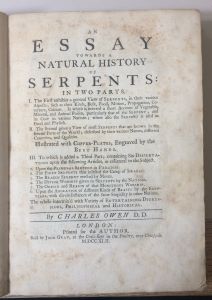
Owen was one of a number of clergymen in the 18th century who wrote books on natural history, which are strange mixture of fact and fable — as much symbolic as scientific. He was not a scientist so he draws on classical, biblical and mythological sources for his information on ‘serpents’. These include not only snakes, but frogs, scorpions and spiders, as well as mythical creatures such as basilisks and dragons. His aim was not just to inform and entertain, but to share his belief that the natural world, as created by God, had moral qualities, which could guide people as to how to live their lives.
So how useful today is Owen’s book to anyone looking for scientific information on reptiles? Trinity Hall student Alex Howard, who is writing her PhD on snakes takes a closer look!
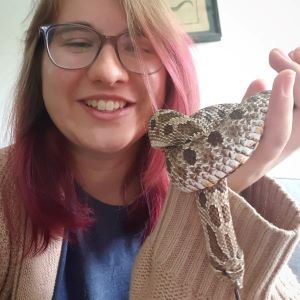
Alex with her snake, Ada
Snakes: Fact or fiction
Although almost 280 years have passed since the publication of this book, and our knowledge of the natural world has increased considerably since then, there are some great passages that show an 18th Century view on one of the world’s most enigmatic reptiles.
The Adder
The first passage that caught my eye was a section referring to one of the UK’s native species, the only venomous snake found in Great Britain. The European adder, Vipera berus, is a small, secretive viper that is usually found in heathlands and woods. While the bite can be painful, the venom this animal produces is not dangerous to most humans. Preferring instead to hunt lizards and small mammals, adders can grow to a length of 80cm and live up to 15 years.

The Adder
The passage in Owen’s book makes mention of the striking orange eyes of this species:
“The Viper or Adder, a subtle and poisonous Creature, slender in Body, about a Foot and a half long, with fiery and flaming Eyes”. p. 51
Owen also notes the presence of the incredible way that Adders reproduce. While many snakes lay eggs from which the babies hatch (known as being oviparous) and mammals give live birth (known as being viviparous), the Adder incubates it’s young internally. These offspring are still technically within separate ‘eggs’, although the shell is reduced to just a membrane that the babies break out with after being born. This process is known as being ovoviviparous, and Owen notes as follows:
“Snakes lay their Eggs, twenty, thirty, fifty, and a hundred sometimes, in one Nest […] whereas Vipers make use of their own Matrix, and bring forth live Vipers: Their young ones come forth wrapt in thin Skins, which break on the third day, and set the little venemous Creatures at liberty, therefore rank’d among the viviparous Animals” p. 52
Blindsnakes
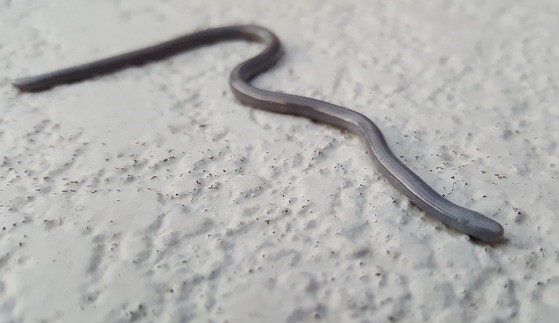
A blindsnake
Another section that brought me particular joy is one that mentions a group of snakes that take the focus of a part of my PhD, the blindsnakes. These snakes, the scientific name for which are Scolecophidia (which literally translates to worm snake, another common name for this species), are found primarily underground, where they hunt the larvae of social insects such as ants and termites. When most people come across one of these, they usually consider it to be a particularly large worm, unless they see the characteristic forked snake tongue. Owen remarks on their incredibly small eyes that give them their ‘blind’ moniker:
“The Caecilia or Typhlinus, the blind Worm, as the Greek word imports; not that it wants Eyes, but because they are so little, that he must be furnish’d with good Optics that can discern them”. 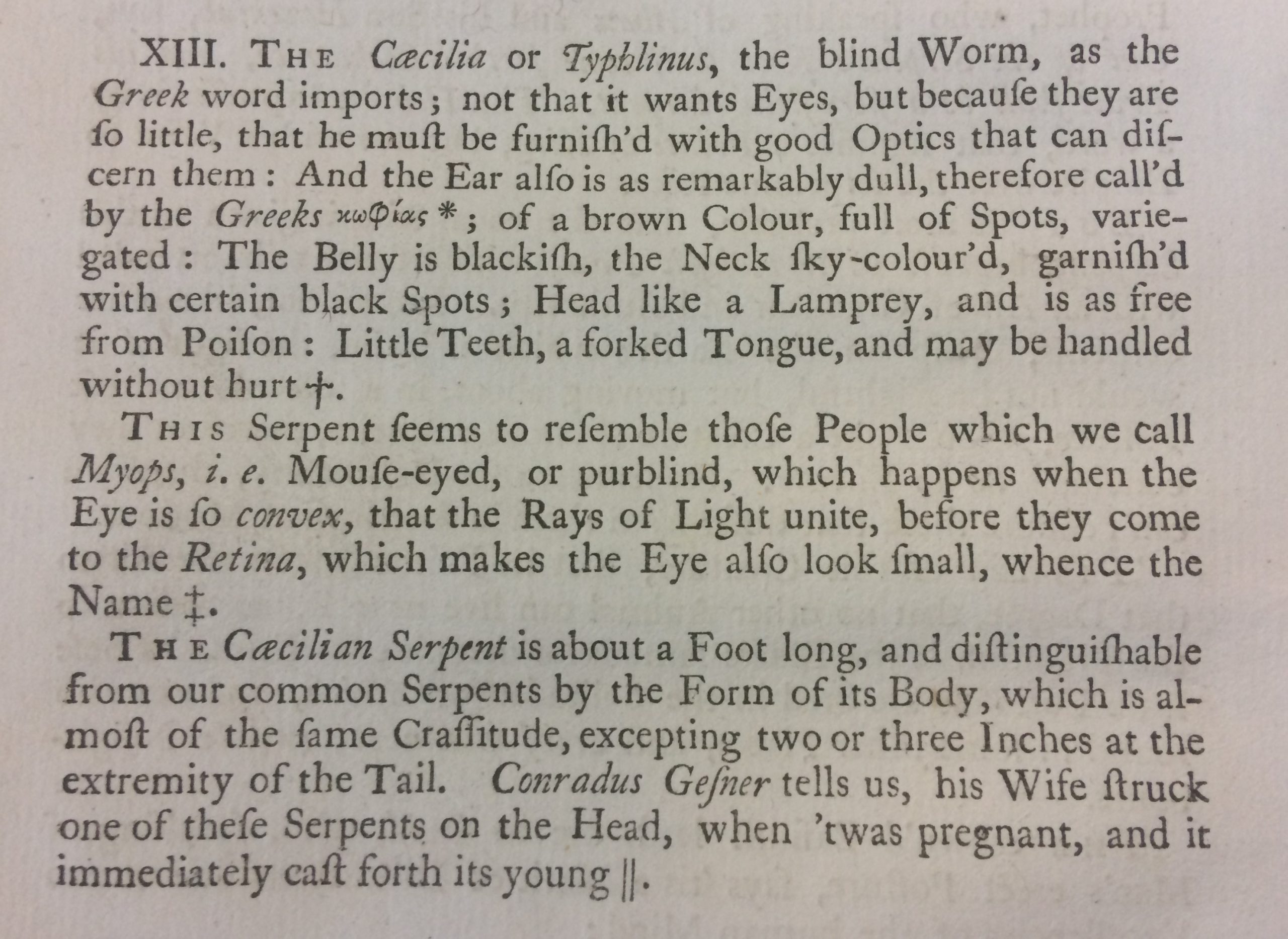
He also notes the presence of viviparity:
“Conradus Gefner tells us, his Wife struct one of these Serpents on the Head, when ‘twas pregnant, and it immediately cast forth its young”. p.80
I find it interesting that he refers to blindsnakes also as “The Caecilian Serpent”. Caecilians as described today are a group of legless amphibians that also spend the majority of their lives underground. Superficially they are very similar to blindsnakes, so it is likely that these two groups of animals were often confused with one another.
Dragons
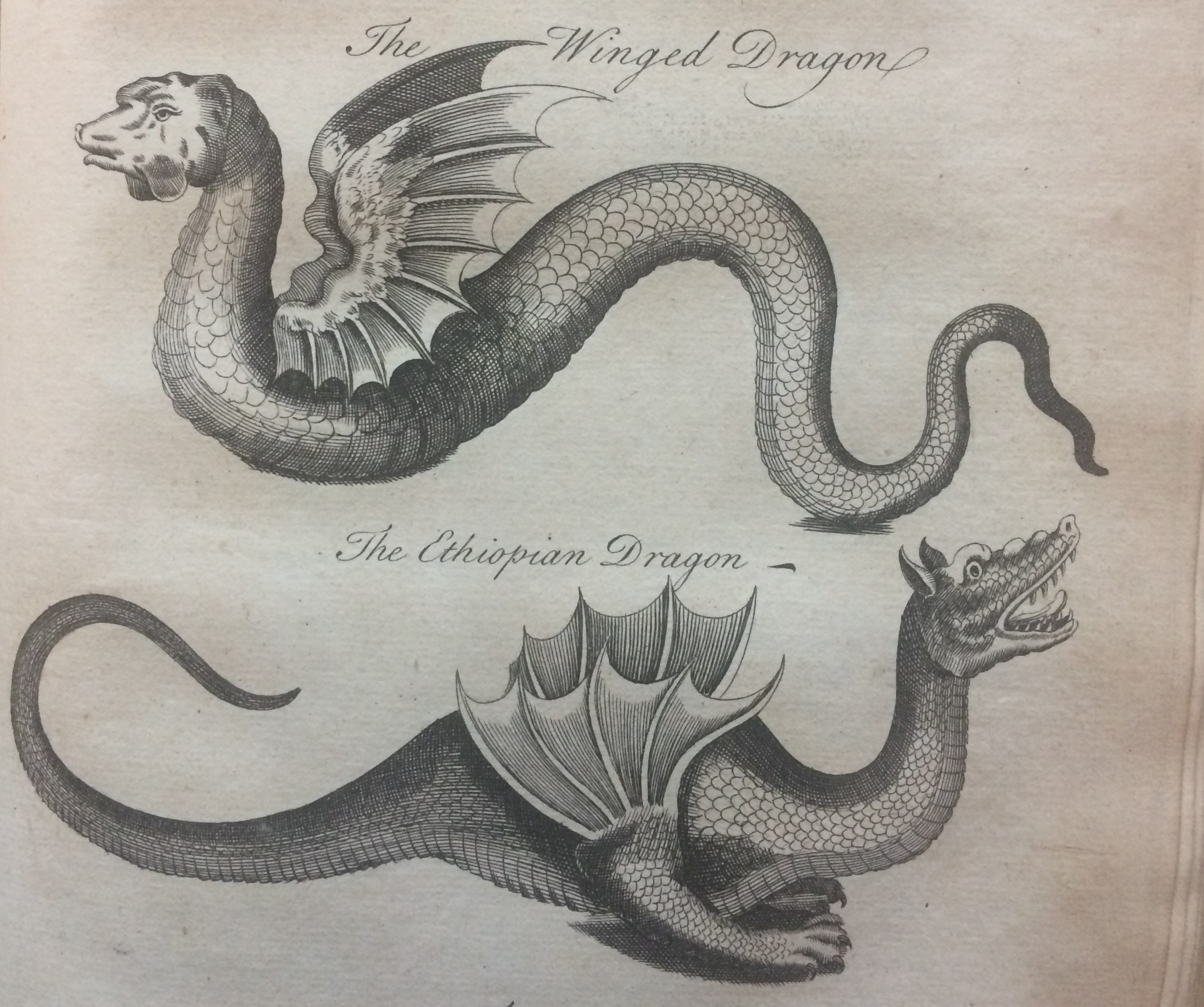
Two dragons
Finally, it appears that also included in the 18th Century categorization of snakes, were the mythical dragons. There is a surprising amount of biological information for these animals, given that they don’t exist:
“Among Serpents, Authors place Dragons; Creatures terrible and fierce in Aspect and Nature. They are divided into Apodes and Pedates, some with Feet, and some without them…”
“Some have observed, that about the Ganges, are Dragons whose Eyes sparkle like precious stones”.
“Dragons are Inhabitants of Africa and Asia; those of India exceed most in Largeness and Longitude: In the Tower of London, is the Skin of one, which is of vast Bulk”. p. 74
While dragons don’t exist, it is possible that these reports are sightings of the large snakes that inhabit these areas. Burmese pythons and reticulated pythons are found across South East Asia, and African rock pythons in Africa. These species are the giants of the snake world, with reticulated pythons reaching over seven and a half metres.
I hope you enjoyed this trip down snake history as much as I did. I’ll leave you with a quote from Charles Owen:
“The Knowledge of mere Animals (who have no School for Arts and Sciences) is most surprising; these, without visible Instructors, know how to perpetuate their Species to the End of the World”.
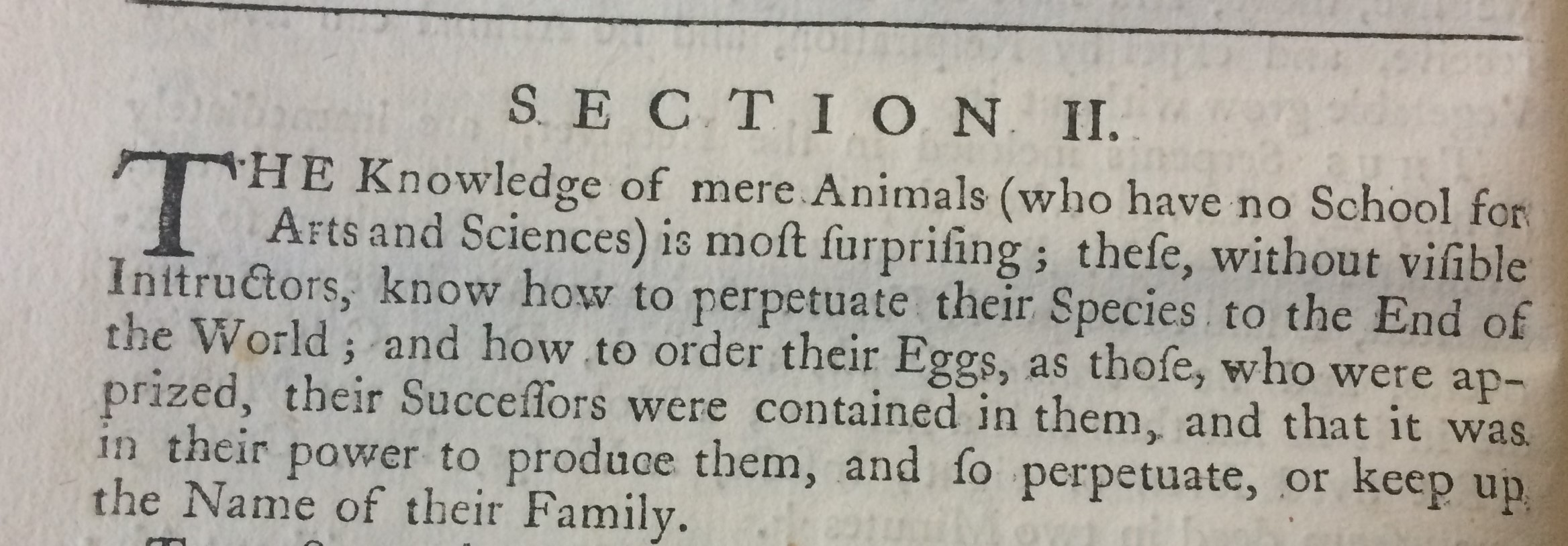
Reference
[1] Owen, Charles, An Essay towards a Natural History of Serpents : In Two Parts : I. The First Exhibits a General View of Serpents, in Their Various Aspects; … II. The Second Gives a View of Most Serpents That Are Known in the Several Parts of the World; … III. To Which Is Added a Third Part; Containing Six Dissertations … : The Whole Intermix’d with Variety of Entertaining Digressions, Philosophical and Historical. London: Printed for the Author, Sold by John Gray, at the Cross-Keys in the Poultry, near Cheapside, 1742. Online at: https://archive.org/details/essaytowardsnat00owen
